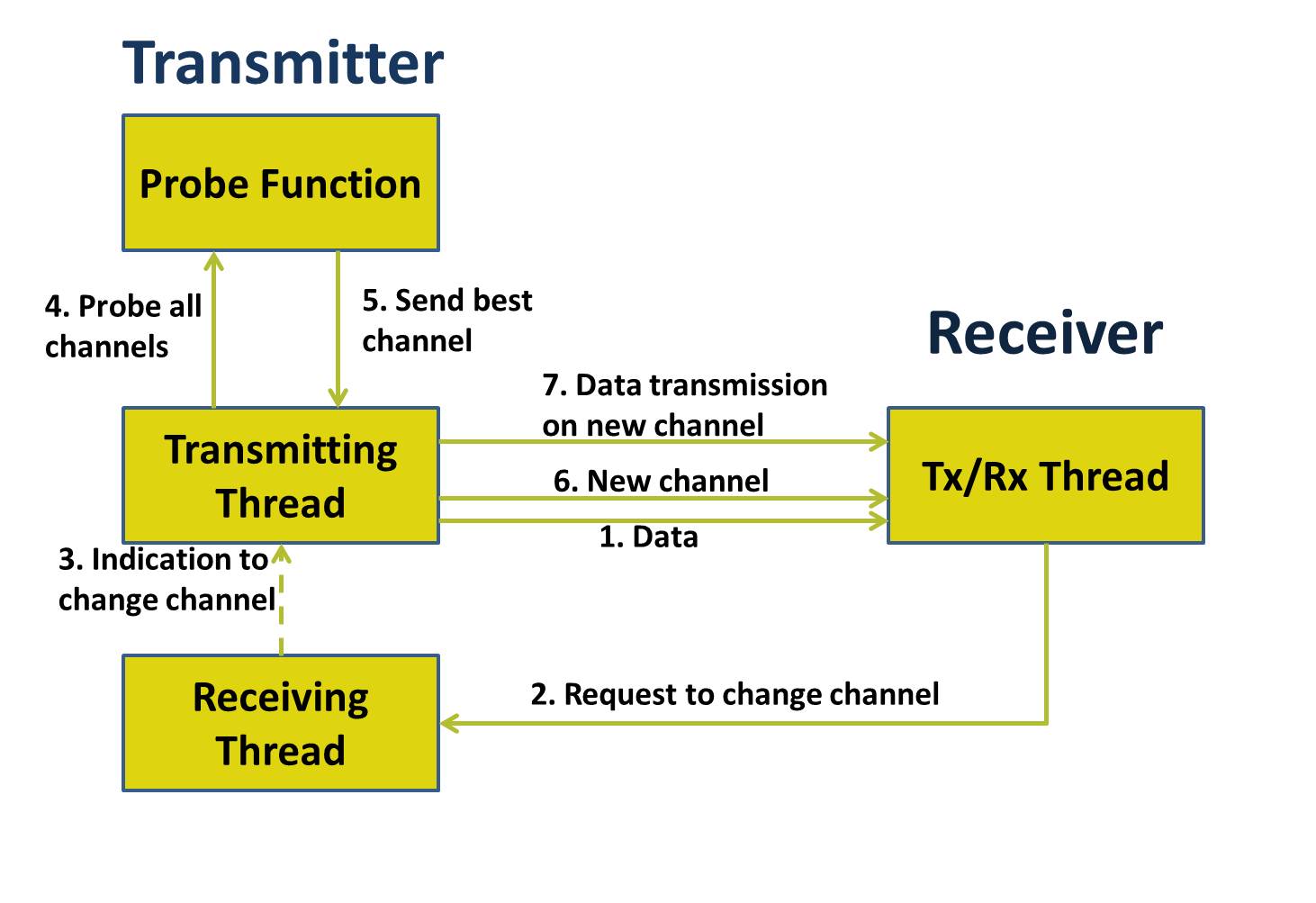Distributed Channel Allocation Scheme
In distributed scheme, the communicating devices continuously monitor the link condition. When the channel condition deteriorates the channel needs to be changed. The transmitter and receiver devices together decide when to change the channel and which channel to switch to. The flowchart for distributed system is shown in the diagram below:

Working:
(1) Data transmission starts on the link with the default channel set for the particular link. The receiving device checks the channel continuously with the help of received signal strength and the link quality of each received packet. (2) If the link quality or received signal strength drop below a pre-decided threshold, the receiver indicates to the transmitting device to search for a new channel with better condition. (3) The receiving thread of the transmitting device now indicates to the transmitting thread that it needs to probe available channels in order to get a new channel. (4) The transmitter now sends probe packets on all the available channels and waits for the replies from the other receivers in the system working on those particular channels. When the transmitter receives those replies, it records the RSSI (Received Signal Strength Indicator) for each channel. (5) The probe function uses the received signal strengths and the link conditions as a metric of comparison to find the best channel and sends it back to the transmitting thread. (6) Transmitter sends the new channel information to the receiver. (7) After sending the new channel, both transmitter and receiver switch to the new channel and data transmission starts again.
Advantages:
(1) The devices always choose the best channel for their working. (2) No single point of failure for the whole system. If one of the devices stops working, only that particular link is broken. Other links function normally. (3) This system does not incur much overhead as only a few control packets for channel changes are required. The main traffice in the system remains for data transmission. Also, system is simple as no controller involved
Disadvantage:
Thrashing: While choosing the best channel, the devices only find the channel with best conditions and do not consider the channel occupancy. The new selected channel can be in use already by some other link. Hence this channel change cause interference to that link and might compell that link to change the channel. Again this link chooses new channel without considering the channel occupancy. This can go on increasing and all links keep on changing channels continously. This incurs large amount of control data and the data transmission reduces considerably. This affects overall system efficiency adversely.
Example: Transmitter gathers following channel conditions by probing Channel 0: rssi = 60, state = busy Channel 1: rssi = 45, state = free Channel 2: rssi = 40, state = free Transmitter, in this scenario, will select Channel 0 which will affect the link working on that channel. This is different from the centralized system in which the controller will select the second best channel i.e. Channel 1 as it is not used by any other link.